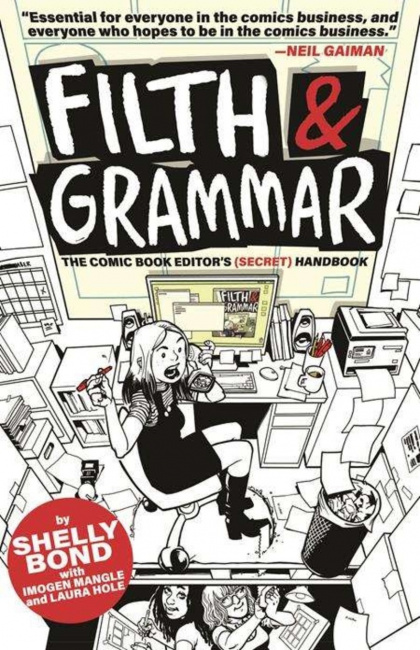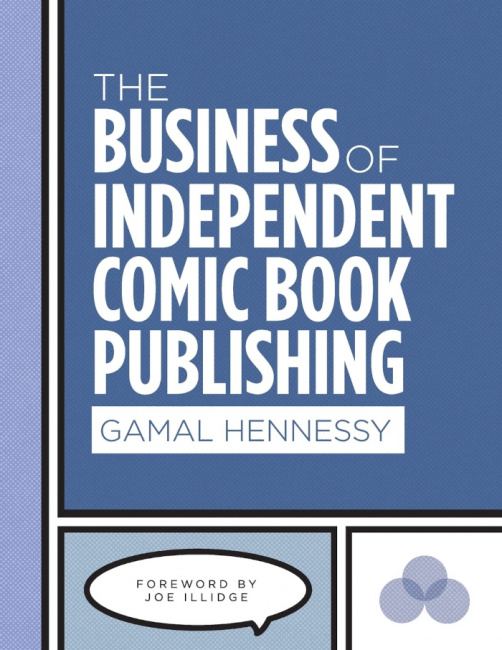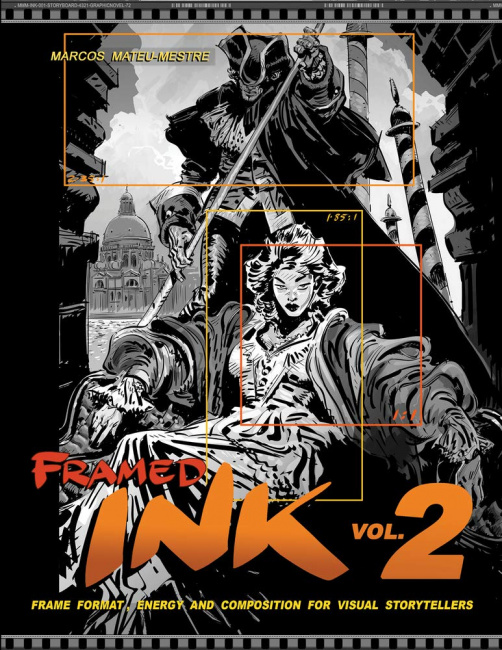Comics have always been a DIY medium, at least at the creative level. These days, there are more resources and more infrastructure available for comic makers to take their work to the next level, get it front of readers, and get it out into the world. This can seem like a daunting prospect, but there are now groaning shelves of books and endless playlists of videos and podcasts offering tips and tricks for comics makers.
Here are a few how-tos that appeared recently that offer valuable guidance to pros and aspiring pros at various stages of their careers, and might make good gift or inventory items.
Who Edits the Editors? Comic editors play a crucial but frequently misunderstood role in the creation of comics. For those interested in learning more, one of the industry’s notable talents, former Vertigo and IDW editor Shelly Bond, has compiled an essential guide to all stages of comics creation from the editorial perspective. Filth & Grammar: The Comic Book Editor’s Secret Handbook, is a treasure-trove of lore covering aspects of the craft like managing collaborative roles within the creative team, tightening up story structures, deadline management, pitching and portfolio preparation, and much more.
The book, which was expanded from the original Kickstarted edition to a meaty 176 pages, includes lots of fun illustrations, lists, dos and don’ts, and pro tips from Bond’s fat Rolodex of industry heavyweights including Neil Gaiman, Peter Milligan, David Walker, Mark Buckingham and others. Distributed by Lunar (Bond also sells it in her online store), $24.99 retail.
Making comics everyone’s business. Longtime comics legal authority Gamal Hennessy did indie creators a solid with his 2020 book, The Business of Independent Comics Publishing, which covered all the whats and wherefores that appear ad nauseum in terms and contracts designed to frustrate the creatively-inclined. That handsome volume is still in print (distributed to retailers through Ingram) or from Hennessy’s site.
While we’re waiting for the follow-up volume, The Business of Freelance Comic Book Publishing (slated for 2023), Hennessy runs an online community for creators called Comics Connection, featuring workshops, seminars, expert interviews and Q&A sessions, for $29.99/month.
Brushing up on drawing skills. Remember when the best and only book on drawing comics was How to Draw Comics the Marvel Way? If so, it means you’re as old as I am, so sorry about that. But, on the bright side, the bookshelf for visual storytellers has expanded so dramatically that it now resembles one of those “one point perspective” examples of train tracks receding toward the horizon so popular in art how-to books.
Some of the best relatively recent books on the art of comic storytelling are the Framed series from Marcos Mateu-Mestre (Design Studio Press), which includes Framed Perspective Volumes 1 and 2, Framed Ink, and Framed Drawing Techniques. The most recent addition to the lineup was Framed Ink 2: Frame Format, Energy and Composition for Visual Storytellers, which came out in 2021. These books skip the preliminaries and focus on advanced techniques for highlighting dramatic elements on the page, leading the reader’s eye, establishing mood, and other creative choices that artists have to make before drawing anything on the art board.
Another great resource for artists and illustrators of all levels is the online community established by artist/educator and entrepreneur Stan Prokopenko at Proko.com. Stan got his start doing how-to videos on YouTube and built the site as a clearinghouse for professional instruction on various aspects of art.
There are in-depth courses in various subjects including anatomy, caricature, digital painting, illustration, design and more. The comics class is taught by David Finch. Some lessons are free, others require paid registration. It’s a nice, smaller-scale, curated version of other online art programs available at sites like Schoolism, Domestika and other great resources.
Look for the local angle. As great as these books and online resources are, there’s no substitute for in-person instruction, now that people are starting to get out in public again. If you’re a retailer in a community with some resident comics pros, consider setting up programs for kids, teens or adult learners that offer tips on making comics.
One great example of this is Portland comics store Books with Pictures, where all-time comics mensch Steve Lieber (Jimmy Olsen, Superior Foes of Spider-Man) holds “office hours” to review portfolios on the first Friday of every month. Lieber advertises that anyone willing to shove 6-8 pages of comic book storytelling at him will receive “honest feedback based on my 30 years experience, what works and what doesn’t, how to tweak a panel for clarity and impact.”
Not every community has a pro willing or able to go that extra mile, but clearly that shop has found a sweet spot between creativity, commerce and community, and comics will be a better place if even one of those aspiring artists takes Lieber’s tips to heart.
Next time, we’ll be running through my annual list of top comic industry stories of 2022, and after the New Year, look for my predictions for trends in the year ahead. Warning: there will be talk of AI.
The opinions expressed in this column are solely those of the writer(s), and do not necessarily reflect the views of the editorial staff of ICv2.com.
Rob Salkowitz (@robsalk) is the author of Comic-Con and the Business of Pop Culture.
Source: ICv2





